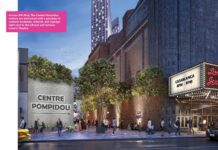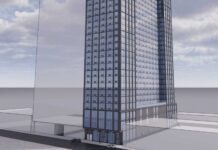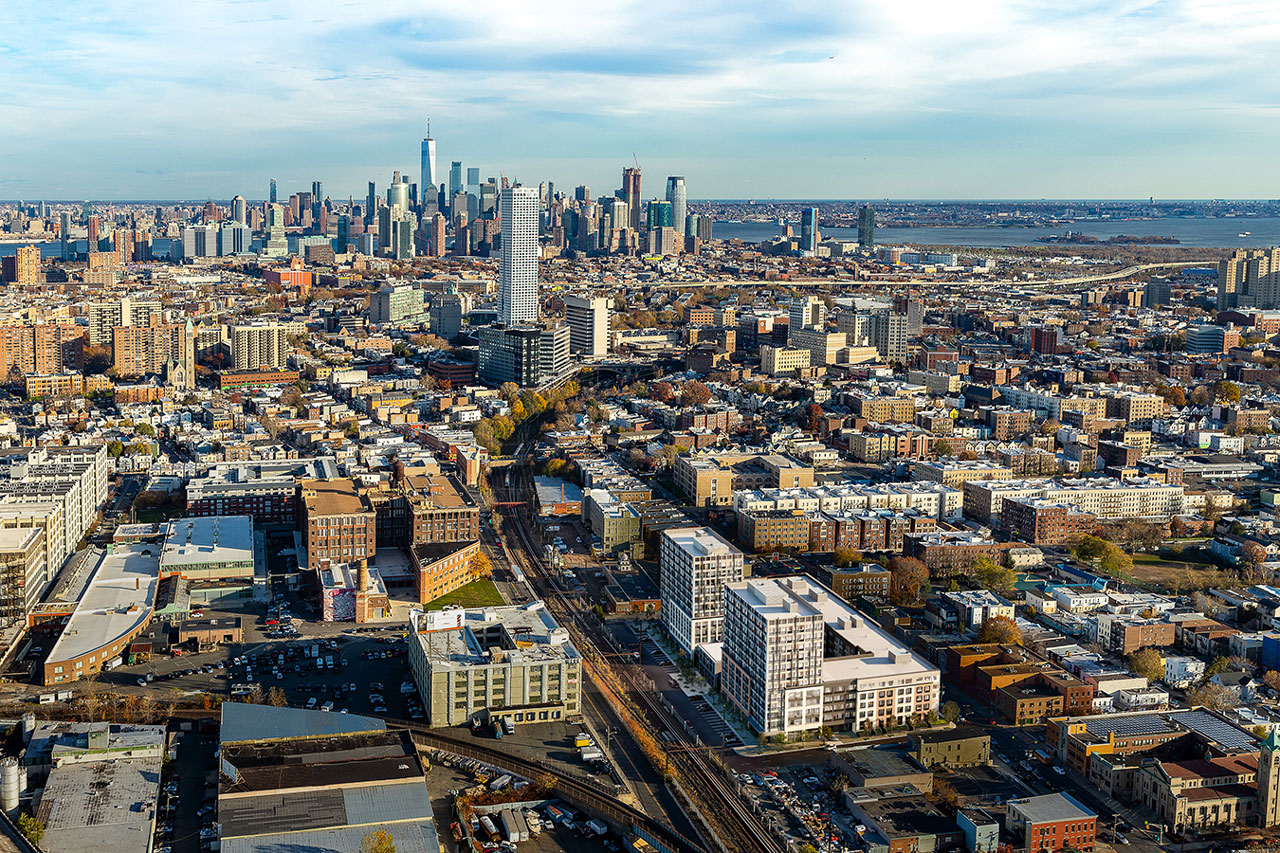
A massive Jersey City development that has been in the works for years is finally moving forward as demolition work has begun on a five-building revitalization project.
Back in 2019, Jersey Digs reported on an endeavor called West Side Square. The first version of the project was initially green lit way back in 2016, but news was scant on the development in recent years.
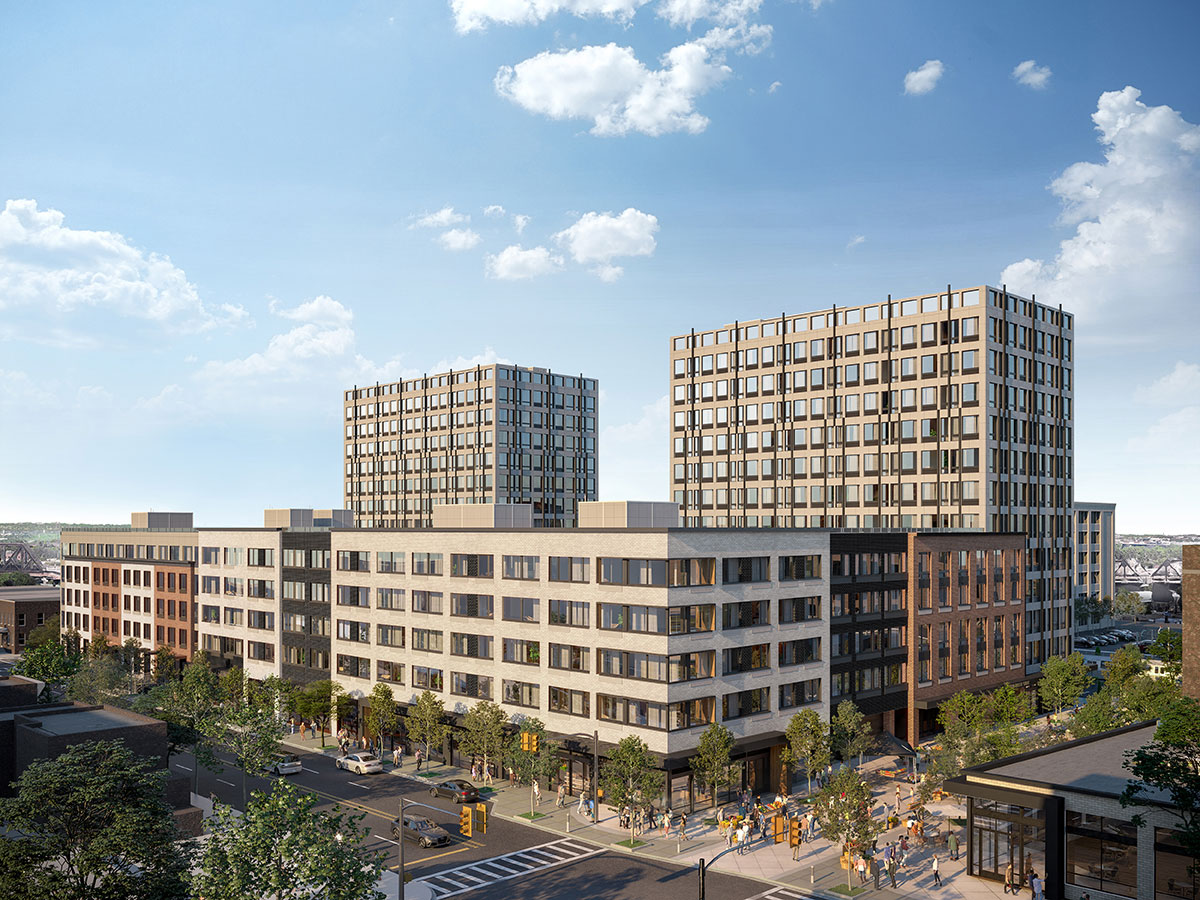
West Side Square is combining six lots at 1072-1075 West Side Avenue that once housed Puccini’s restaurant, which was in business for 31 years before closing in 2015. Toronto-based developer Altree Developments bought the site several years ago and is teaming up with Lantree Developments on the project.
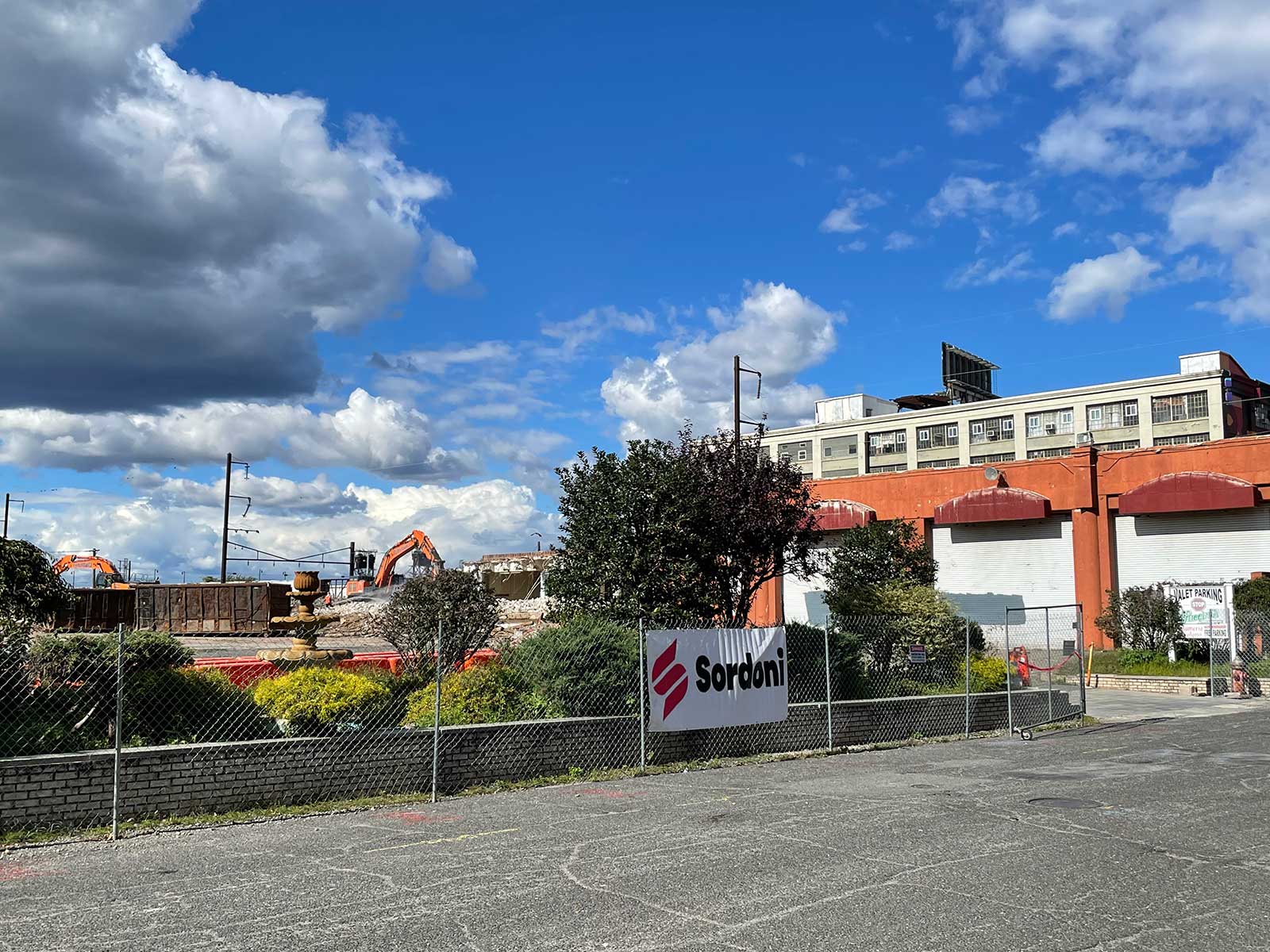
Demolition of the former Puccini’s building quietly began earlier this month, with Sordoni Construction Company starting work on the project. The properties will eventually be home to a mixed-use development totaling 486 residential units to go along with 23,000 square feet of ground floor commercial space.
Designed by Hoboken-based MHS Architecture, West Side Square will consist of two 13-story towers connected by a series of five-story buildings. 285 garage parking spaces will complement the development’s residences, which will feature a mix of units ranging between 450 square feet and 1,300 square feet.

Additional design elements of the project include a first floor complete with a fitness area and yoga room. Other amenities at the complex include a common private dining area, bar and café areas, pet grooming room, gaming area, and office spaces.
The second floor of West Side Square will feature a 21,000 square foot amenity deck complete with a pool. A recent announcement from Sordoni Construction Company lists a 2025 completion date for the massive project.
West Side Square is located within Jersey City’s Marion neighborhood, which is probably one of the slower growing sections especially compared to nearby Journal Square.
However, a few notable developments like 161 Van Wagenen Avenue are under construction and the Port Authority has flirted with the idea of adding a PATH station along an existing set of train tracks that run through the area.

